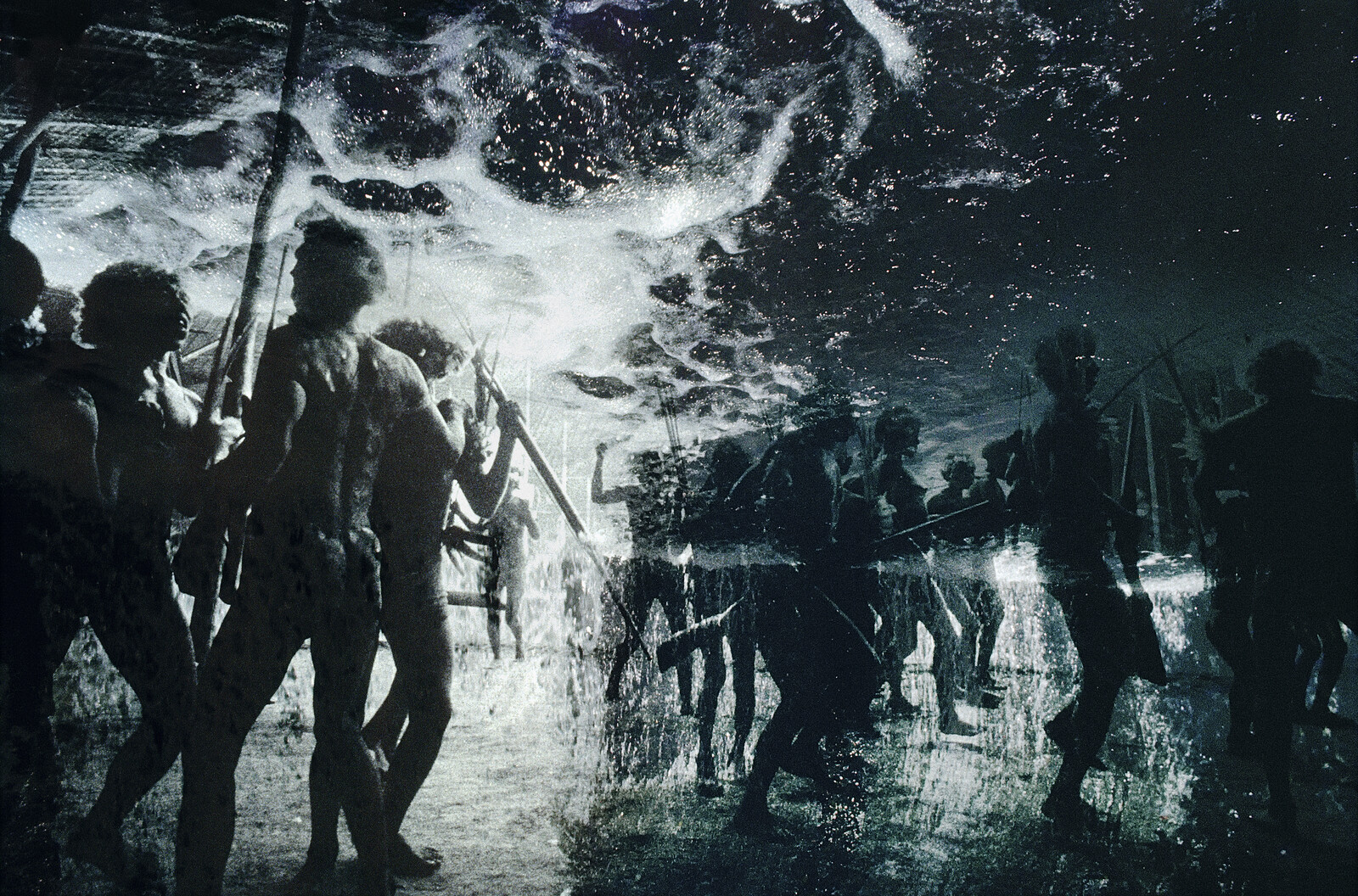Sonhos Yanomami (Yanomami Dreams)
September 5, 2023–January 28, 2024
Parque Ibirapuera
Av. Pedro Alvares Cabral, s/nº
São Paulo-São Paulo
04094000
Brazil
Hours: Tuesday–Sunday 10am–6pm
T +55 11 5085 1300
comunicacao@mam.org.br
The path of Claudia Andujar (b. Switzerland, 1931), who fled Nazi persecution during the Second World War, reveals the way in which political conflicts interfere in the life of different peoples. The artist arrived in Brazil in 1955, the country she lives in until today and where she became a naturalized citizen in 1976. Her life is marked by the fight for Yanomami land demarcation and by a series of photographic essays dedicated to indigenous peoples in Brazil. Claudia Andujar identifies with the vulnerability of the Yanomami people and teaches us that others help us understand who we are.
The series Sonhos Yanomami [Yanomami Dreams], from 2002, was made from her collection of images, the overlapping of chrome and negatives made since 1971, the date of her first trip to the Catrimani river basin, in Roraima, Yanomami land that was granted by the Brazilian government only in 1992. It is a work from the artist’s mature period, when she already had great intimacy with the culture of the people who embraced her.
The images reveal something from the rituals performed by Yanomami spiritual leaders and the importance of dreams in their cosmology. Shamans, unlike the others, move while asleep in the company of spirits, the xapiri, who can bring knowledge, healing and protection to the community. The dream, far from being a common fact that is forgotten after waking up, is a profound connection to spirits, who travel beyond the sky, the earth, and the underground world, and come back with teachings from what they saw.
Claudia Andujar’s work communicates with the Yanomami cosmology and their ancestral knowledge through images. Owls, herons, monkeys, and portraits of indigenous individuals merge with the lights, the texture of stones and trees, resulting in ghostly photographs of the dreams of a people with a sophisticated culture.
In the period when another great genocide against the Yanomami people was revealed to the world—between 2019 and 2022—due to the incentive for illegal mining and weapon usage, the exhibit acquires a symbolic nature in order to give visibility to indigenous values. This is also a 50-year-old story, approximately: the Yanomami people have been decimated at least since 1973 with the construction of the North Perimetral Highway (BR-210) and the opening of dozens of aircraft landing strips.
The survival of the Yanomami, aside from being a humanitarian matter, ensures the protection of the forest, environmental sustainability, and life on the planet. Shamans, the only ones who can dream further and hear the forest spirits, prevent the sky from falling; it is sustained by the xapiri, who keep the balance and order of the universe. The end of the world, the collapse of the sky, will happen when the forest is exterminated and the last shaman dies. Time to reverse the great catastrophe is running out.
—Cauê Alves, Chief curator at MAM São Paulo


